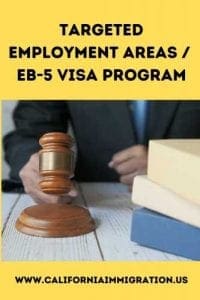
EB-5 immigrant investor visa
The fifth and final group of aliens for whom employment-based immigrant classification is available includes work creation immigrants,
Sometimes referred to as entrepreneurs.
Qualifying immigrants must be seeking to enter the United States,
The purpose of engaging in a new commercial enterprise:
(1) which the alien has established,
(2) in which the alien has invested,
After November 29, 1990 (the date of enactment of the Immigration Act of 1990),
Or is actively in the process of investing,
The entrepreneur and his or her spouse or children.
The number of visas available in this category is not to exceed 7.1% of the worldwide total for employment-based immigrants.


In 1990, the United States Congress created the investor visa category, known as the EB-5 program,
After two years,
Permanent residence status under the conditions noted above.
Under the legislation,
As part of its mandate under the Basic Pilot Program Extension and Expansion Act of 2003,
Category to Congress one year after implementation of the 2003 Act.
The Act required the GAO to gather information on immigrant participation in the program, including the number of participants,
Their countries of origin, and the number who sought U.S. citizenship.
After completing the investigation,
The GAO found that the number of visas granted,
The EB-5 category constituted a small fraction of the approximately 10,000 visas allocated annually by law.
The Department of State issued a total of 6,024 visas to investors and their dependents under the EB-5 program.
As of June 2004, only 653 investors, not including dependents,
Uncertainty as to the ability to meet the eligibility requirements,
For permanent residency and a failure,
On the part of the Department of Homeland Security to issue implementing regulations to adjudicate permanent resident applications.
In an attempt to resolve the many issues facing the EB-5 program,
The USCIS has created,
An Investor and Regional Center Unit (IRCU)
Which has oversight of policy and regulation development,
Field guidance, form design, case auditing, and training regarding regional center adjudications and associated investor petitions within the investor program.
According to the USCIS,
The adjudication process for the EB-5 investor program,

